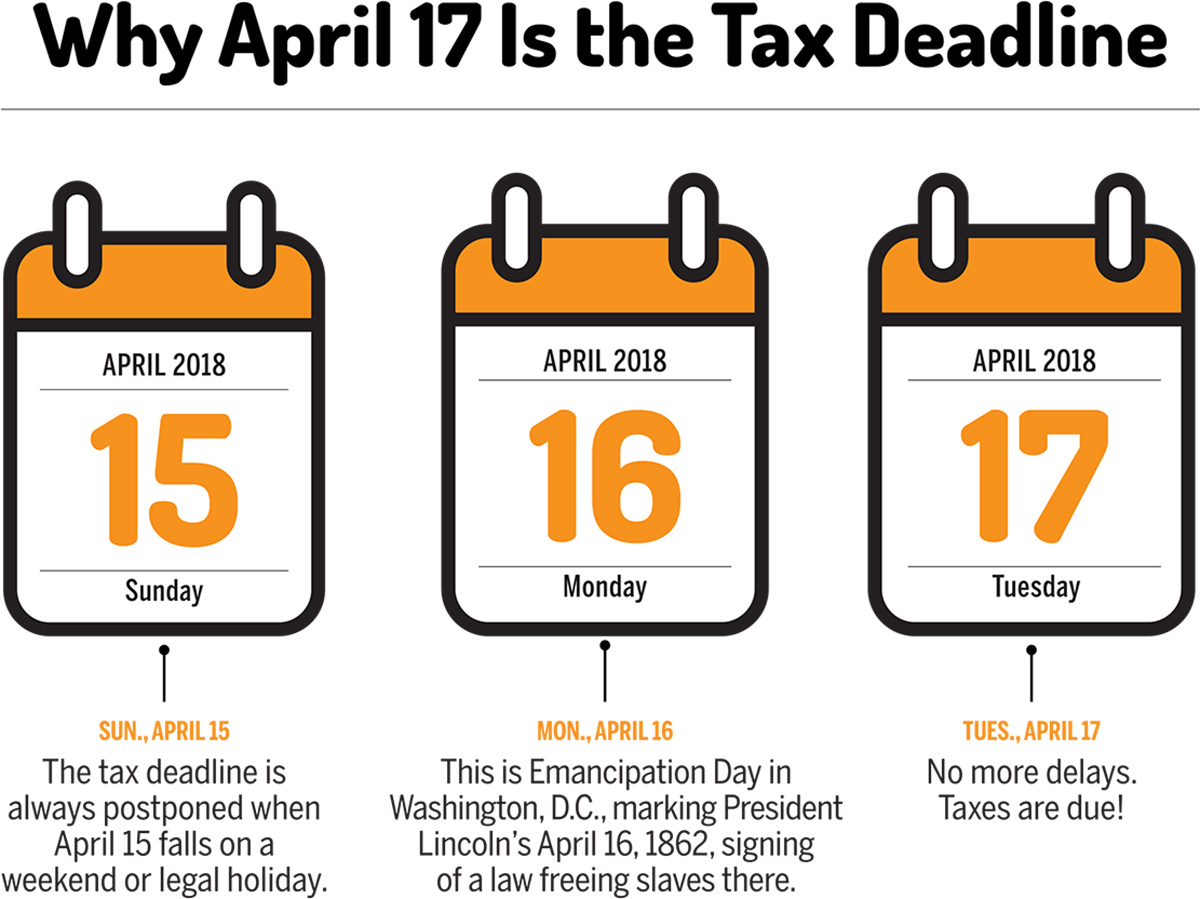

Finance
How To File 1065 Tax Return
Modified: March 1, 2024
Looking to file your 1065 tax return? Learn how to do it step by step in this comprehensive guide. Finance made easy!
(Many of the links in this article redirect to a specific reviewed product. Your purchase of these products through affiliate links helps to generate commission for LiveWell, at no extra cost. Learn more)
Table of Contents
- Introduction
- Step 1: Gather the necessary information
- Step 2: Understand the 1065 tax return form
- Step 3: Complete the general information section
- Step 4: Fill out the Schedule K-1
- Step 5: Report income and expenses on Form 1065
- Step 6: Calculate and report partner’s distributive share
- Step 7: Include any necessary additional forms and schedules
- Step 8: Review and double-check the completed form
- Step 9: Sign and submit the 1065 tax return
- Conclusion
Introduction
Filing taxes can be a daunting task, especially when it comes to complex tax forms like the 1065 tax return. The 1065 form is used by partnerships, including limited liability companies (LLCs), to report income, deductions, and credits to the Internal Revenue Service (IRS). Understanding how to properly file a 1065 tax return is crucial to ensure compliance with tax laws and avoid any potential penalties or audits.
In this article, we will guide you through the process of filing a 1065 tax return step by step. From gathering the necessary information to completing the form and submitting it to the IRS, we will cover all the essential aspects to make your tax filing experience as smooth as possible.
It’s important to note that partnering with a tax professional or consulting with an accountant who specializes in partnership taxes can provide valuable assistance and help ensure accurate completion of the 1065 form. However, having a general understanding of the process can still be beneficial in managing your partnership’s tax responsibilities.
Now, let’s dive into the steps required to file a 1065 tax return and ensure that your partnership stays in compliance with the IRS regulations.
Step 1: Gather the necessary information
Before starting the process of filing a 1065 tax return, it’s crucial to gather all the necessary information and documents. Having this information readily available will help streamline the tax preparation process and ensure accuracy. Here are some key pieces of information you’ll need to gather:
- Business information: Collect all the relevant details about your partnership, including the legal name, address, Employer Identification Number (EIN), and any changes that have occurred during the tax year.
- Partner information: Compile the names, addresses, Social Security numbers or Individual Taxpayer Identification Numbers (ITINs) of all partners in the partnership. You’ll also need to know the percentage of ownership and profit/loss distribution for each partner.
- Financial statements: Obtain copies of your partnership’s financial statements, including the balance sheet and income statement, for the tax year you’re reporting. These statements will help you determine your partnership’s income, deductions, and credits.
- Income and expense records: Gather documentation of all income received by the partnership, such as sales receipts, invoices, and bank statements. Additionally, collect records of all expenses incurred, such as receipts, invoices, and canceled checks. Organize these records by category, such as office supplies, rent, utilities, and advertising expenses.
- Capital contributions and distributions: Ensure you have a record of any capital contributions made by partners throughout the year, as well as any distributions or withdrawals from the partnership. These amounts will be reported on the Schedule K-1 for each partner.
- Tax forms and schedules: If your partnership engages in certain activities or transactions, you may need to complete additional tax forms or schedules. Examples include Form 1099 for reporting certain payments, Schedule C for reporting income or losses from a business, or Form 4562 for depreciation and amortization expenses.
By gathering all the necessary information beforehand, you’ll save time and avoid potential delays or mistakes during the tax return preparation process. Stay organized and keep all relevant documents in a secure location for future reference.
Step 2: Understand the 1065 tax return form
Before diving into completing the 1065 tax return form, it’s essential to have a basic understanding of its structure and components. The 1065 form, also known as the U.S. Return of Partnership Income, consists of several sections and schedules that report the partnership’s income, deductions, and credits. Here’s an overview of the key sections:
- Partnership information: This section includes general information about the partnership, such as the legal name, address, EIN, and the beginning and ending dates of the tax year. It is important to ensure that all information provided is accurate and up-to-date.
- Income and deductions: The partnership must report its income and deductions in this section. This includes revenue from business operations, interest income, rental income, and any other sources of partnership income. Deductions may include expenses related to the partnership’s operations, such as salaries, rent, utilities, and depreciation.
- Schedule K-1: The Schedule K-1 is a crucial part of the 1065 form as it reports each partner’s distributive share of income, deductions, and credits. It is required to be prepared for each partner in the partnership. The information from the Schedule K-1 is used by partners to report their share of partnership income on their individual tax returns.
- Other schedules: Depending on the partnership’s activities and transactions, additional schedules may need to be completed and attached to the 1065 form. For example, if the partnership has international operations, Schedule B may be required to report foreign activities. Additionally, other schedules such as Schedule L, Schedule M-1, and Schedule M-2 may be needed to reconcile balance sheet differences and report other financial information.
Understanding the structure and components of the 1065 tax return form is crucial for accurately reporting the partnership’s financial information. Take the time to familiarize yourself with the different sections and schedules to ensure proper completion of the form.
Step 3: Complete the general information section
Once you have gathered all the necessary information and familiarized yourself with the structure of the 1065 tax return form, it’s time to start filling it out. The first section of the form is the general information section, which requires you to provide basic details about your partnership.
Here are the key elements to complete in the general information section:
- Legal name and address: Enter your partnership’s legal name exactly as it appears on your official documents. Include the complete address, including street, city, state, and ZIP code.
- Employer Identification Number (EIN): Enter your partnership’s EIN, which is a nine-digit number issued by the IRS. This unique identifier helps the IRS track and identify your partnership for tax purposes.
- Tax year: Indicate the beginning and ending dates of your partnership’s tax year. Note that the tax year for partnerships is typically the calendar year or a fiscal year ending on the last day of any month other than December.
- Business code: Provide the appropriate business code for your partnership’s primary business activity. This code helps the IRS classify and analyze data based on industry sectors.
- Other information: If any changes have occurred within your partnership during the tax year, such as a change in address or partners, indicate them in this section. Additionally, if your partnership is a publicly traded partnership, you’ll need to check the box indicating so.
It’s crucial to ensure that all the information provided in the general information section is accurate and up-to-date. Double-check the entered information before moving on to the next sections of the form.
Remember to keep a copy of the completed 1065 tax return for your records. This will be important for future reference and in case of any inquiries or audits from the IRS.
Step 4: Fill out the Schedule K-1
The Schedule K-1 is a critical component of the 1065 tax return form as it reports each partner’s distributive share of income, deductions, and credits. It is important to accurately complete this schedule to ensure accurate reporting and to provide each partner with the necessary information for their individual tax return.
Here are the key elements to fill out in the Schedule K-1:
- Partner information: Provide the name, address, and Social Security number or ITIN of each partner. Ensure that the information matches the details you gathered during Step 1.
- Distribution items: Report each partner’s share of the partnership’s income, expenses, and credits. This includes items such as ordinary business income or loss, rental income or loss, interest income, and other income or deductions that are allocated to each partner based on their ownership percentages.
- Other information: There may be additional information required depending on the specific circumstances of your partnership. This may include reporting self-employment earnings for partners who actively participate in the partnership’s operations, or reporting capital gains or losses from the sale of partnership assets.
When completing the Schedule K-1, pay careful attention to the instructions provided by the IRS. Ensure that you accurately calculate and allocate the partnership’s income, deductions, and credits to each partner based on their ownership percentages.
Once the Schedule K-1 is completed, provide each partner with a copy to assist them in preparing their individual tax returns. Retain a copy for your records, as well.
Completing the Schedule K-1 accurately is crucial to maintain the integrity of your partnership’s tax reporting. Take the time to review the completed schedule and double-check all information before proceeding to the next steps of filing the 1065 tax return.
Step 5: Report income and expenses on Form 1065
Now that you have completed the Schedule K-1 and provided each partner with their share of income, deductions, and credits, it’s time to report the partnership’s income and expenses on Form 1065.
Here are the key elements to consider when reporting income and expenses:
- Partnership income: Report all sources of income generated by the partnership during the tax year. This includes revenue from business operations, interest income, rental income, and any other sources of partnership income. Ensure that you accurately calculate and report the total income earned by the partnership.
- Business expenses: Deduct all eligible business expenses incurred by the partnership. This may include expenses related to operations, such as salaries, rent, utilities, office supplies, and advertising expenses. Make sure to keep detailed records and maintain supporting documentation for all claimed expenses.
- Cost of goods sold (if applicable): If your partnership is engaged in the sale of goods, you may need to calculate and report the cost of goods sold. This includes the cost of inventory or materials used to produce the goods that were sold during the year.
- Other deductions: Apart from business expenses, other deductions may be applicable to your partnership. This can include depreciation and amortization expenses, contributions to retirement plans, and interest expenses. Consult the IRS instructions and guidelines to ensure you are reporting all relevant deductions accurately.
When reporting income and expenses on Form 1065, it’s important to be thorough and accurate. Use the appropriate lines and sections of the form to clearly report each item. Double-check all calculations and ensure that you provide all required information.
Remember to keep a copy of the completed Form 1065 and any supporting documentation for your records. It is important to maintain these records for at least three years in case of any inquiries or audits from the IRS.
By accurately reporting income and expenses on Form 1065, you will fulfill your partnership’s tax obligations and provide the necessary information for the IRS to assess your partnership’s tax liability.
Step 6: Calculate and report partner’s distributive share
In Step 4, you completed the Schedule K-1, which reports each partner’s distributive share of income, deductions, and credits. Now, in Step 6, it’s essential to accurately calculate and report each partner’s distributive share on Form 1065.
Here is how to calculate and report partner’s distributive share:
- Ownership percentages: Determine the ownership percentage for each partner based on their capital contribution or the partnership agreement. The ownership percentage represents the partner’s share of ownership and profits.
- Allocate income and expenses: Use the ownership percentages to allocate the partnership’s income and expenses to each partner. Multiply the total income or expense by the partner’s ownership percentage to determine their distributive share.
- Separately stated items: Some items on the Schedule K-1 may be classified as separately stated items, such as capital gains or losses, rental income, or self-employment earnings. Allocate these items separately and report them on the appropriate lines of the Schedule K-1.
- Reporting on Form 1065: On Form 1065, report each partner’s distributive share of income, deductions, and credits in the appropriate sections. The totals for each category should match the information reported on the Schedule K-1 for each partner.
Keep in mind that each partner’s distributive share will be included on their individual tax return when they report their share of partnership income. It is crucial to accurately calculate and report these shares to ensure consistency between the partnership return and the individual returns.
As with previous steps, it’s important to double-check all calculations and ensure that the reported distributive shares are accurate. Mistakes or discrepancies can lead to unnecessary complications and potential issues with the IRS.
Remember to keep a copy of the completed Form 1065, as well as the Schedule K-1 for each partner, for your records. These documents will serve as a reference and may be requested in the future in case of any inquiries or audits.
By accurately calculating and reporting each partner’s distributive share, you will fulfill your partnership’s reporting obligations and provide the necessary information for each partner to fulfill their individual tax obligations.
Step 7: Include any necessary additional forms and schedules
Depending on the specific activities and transactions of your partnership, you may be required to include additional forms and schedules along with your 1065 tax return. These supplemental forms and schedules provide the IRS with more detailed information regarding certain aspects of your partnership’s operations.
Here are some examples of additional forms and schedules that you may need to include:
- Schedule B: This schedule is used to report the partnership’s specific sources of income and deductions from foreign activities, if applicable. It is typically required for partnerships with international operations or income from foreign sources.
- Schedule L: The Schedule L is used to report the balance sheet information of the partnership. It provides details of the partnership’s assets, liabilities, and partners’ capital accounts. This schedule helps reconcile any discrepancies between the partnership’s financial records and the tax return.
- Schedule M-1: The Schedule M-1 helps reconcile the partnership’s net income or loss reported on the tax return with the net income or loss calculated based on the financial statements. It identifies and explains any differences between the financial and tax reporting of certain items.
- Schedule M-2: If there are substantial differences between the partners’ capital accounts at the beginning and end of the tax year, the Schedule M-2 is used to provide a detailed breakdown of these changes. It tracks the movement in partners’ capital accounts, including contributions, distributions, and other adjustments.
- Other forms and schedules: Depending on your partnership’s specific circumstances, you may also need to include other forms and schedules. This could include Form 1099 for reporting payments made to individuals or businesses, Form 4562 for reporting depreciation and amortization expenses, or additional schedules to report specific types of income or deductions.
It’s important to thoroughly review the instructions provided by the IRS and assess whether any additional forms or schedules are required for your partnership. Failure to include necessary forms and schedules may result in delays or errors in the processing of your tax return.
Ensure that all supplemental forms and schedules are completed accurately and attached to your 1065 tax return in the specified order. Keep copies of all documents for your records, as they may be requested in the future during an audit or for reference purposes.
By including any necessary additional forms and schedules, you demonstrate compliance with the IRS requirements and provide a comprehensive picture of your partnership’s activities and financials.
Step 8: Review and double-check the completed form
As you near the end of the process of filing a 1065 tax return, it is crucial to review and double-check the completed form. Taking the time to carefully review your tax return can help identify any errors or omissions, ensuring the accuracy and completeness of your filing.
Here are some key steps to follow when reviewing your completed form:
- Verify accuracy of information: Review all the information provided on Form 1065, including the general information section, income and expenses, and partner allocations. Ensure that the details entered are accurate and match the supporting documentation.
- Check calculations: Double-check all calculations, including additions, subtractions, and percentages. This includes calculations for income, deductions, and partner shares. Ensure that all calculations are accurate and supported by appropriate documentation.
- Review for consistency: Ensure that the information reported on Form 1065 is consistent with the information reported on other forms and schedules. Make sure there are no discrepancies or inconsistencies between different sections of the tax return.
- Validate completeness: Ensure that all required forms, schedules, and supporting documentation are attached to the filing. Review the IRS instructions and guidelines to confirm that you have included everything necessary for your specific situation.
- Seek professional assistance, if needed: If you are unsure about any aspect of your tax return or feel overwhelmed by the complexity of the form, consider seeking help from a tax professional or accountant with experience in partnership taxation. They can provide guidance and ensure that your tax return is accurate and compliant.
Devoting the time to thoroughly review and double-check your completed form can minimize the risk of errors, reduce the chances of an audit, and help you avoid penalties or fees. It shows a commitment to accuracy and compliance with tax regulations.
Once you have completed the review, make sure to sign and date the form. Keep a copy of the filed tax return, along with supporting documentation, for your records.
By carefully reviewing your completed form, you are taking a proactive step to ensure a well-prepared and accurate tax return filing for your partnership.
Step 9: Sign and submit the 1065 tax return
After thoroughly reviewing and double-checking your completed 1065 tax return, the final step is to sign and submit the form to the IRS. The process of signing and submitting your tax return is essential to officially file and fulfill your partnership’s tax obligations.
Here are the key steps to signing and submitting the 1065 tax return:
- Signatures: Both the partnership representative and the tax matters partner (if different) must sign the tax return. Make sure these signatures are in the appropriate sections to validate the filing.
- Date: Write the date of signing next to the signatures. This date signifies when the tax return was officially filed with the IRS.
- Retention of copy: Keep a copy of the signed tax return, along with all supporting documentation, for your records. These records will serve as a reference in case of any future inquiries, audits, or amendments.
- Submission method: Determine the appropriate method for submitting your tax return to the IRS. You have the option to file electronically or mail a paper copy of the tax return. Review the IRS guidelines to ensure you are following the correct submission method for your specific situation.
- Payment of tax liability: If your partnership has a tax liability, ensure that payment is made by the due date using the appropriate payment method specified by the IRS. Failure to pay the tax liability on time may result in penalties or interest charges.
- Record delivery confirmation: If you choose to mail a paper copy of the tax return, consider using certified mail or a reputable delivery service. This will provide proof of sending and delivery, helping you track the status of your submission.
Upon submission, it is important to keep track of the status of your tax return. If you choose to electronically file, you can check the status using the IRS e-file service. For paper submissions, monitor any notifications or correspondence from the IRS regarding the processing of your return.
Completing the signing and submission process accurately and promptly ensures compliance with the IRS and demonstrates your commitment to meeting your partnership’s tax obligations. If you have any questions or concerns during this step, consider consulting with a tax professional or contacting the IRS for guidance.
By signing and submitting your 1065 tax return, you conclude the process of filing your partnership’s taxes for the year.
Conclusion
Filing a 1065 tax return for your partnership may seem overwhelming, but by following these nine steps, you can navigate the process with confidence and accuracy.
Throughout this guide, we have walked you through gathering the necessary information, understanding the 1065 tax return form, completing the general information section, filling out the Schedule K-1, reporting income and expenses, calculating and reporting partner’s distributive share, including any necessary additional forms and schedules, reviewing and double-checking the completed form, and finally, signing and submitting the tax return.
By taking the time to gather all the essential information, understanding the structure of the form, and diligently completing each section, you ensure compliance with tax laws and reduce the risk of errors or omissions. Additionally, reviewing the completed form and seeking professional assistance when needed further enhances the accuracy of your filing.
Remember to retain copies of all documents for your records, as they can be invaluable during future inquiries or audits. Additionally, stay informed about any changes to tax laws or regulations that may impact your partnership’s tax obligations.
While this guide provides a comprehensive overview of the process, it is always beneficial to consult with a tax professional or accountant who specializes in partnership taxes. They can provide personalized guidance and ensure that your tax return accurately reflects your partnership’s financial activities.
By successfully filing your 1065 tax return, you fulfill your partnership’s tax responsibilities, contribute to the integrity of the tax system, and pave the way for continued success and growth. Stay organized, diligent, and proactive in managing your partnership’s tax obligations, and you will navigate the tax-filing process with confidence.














